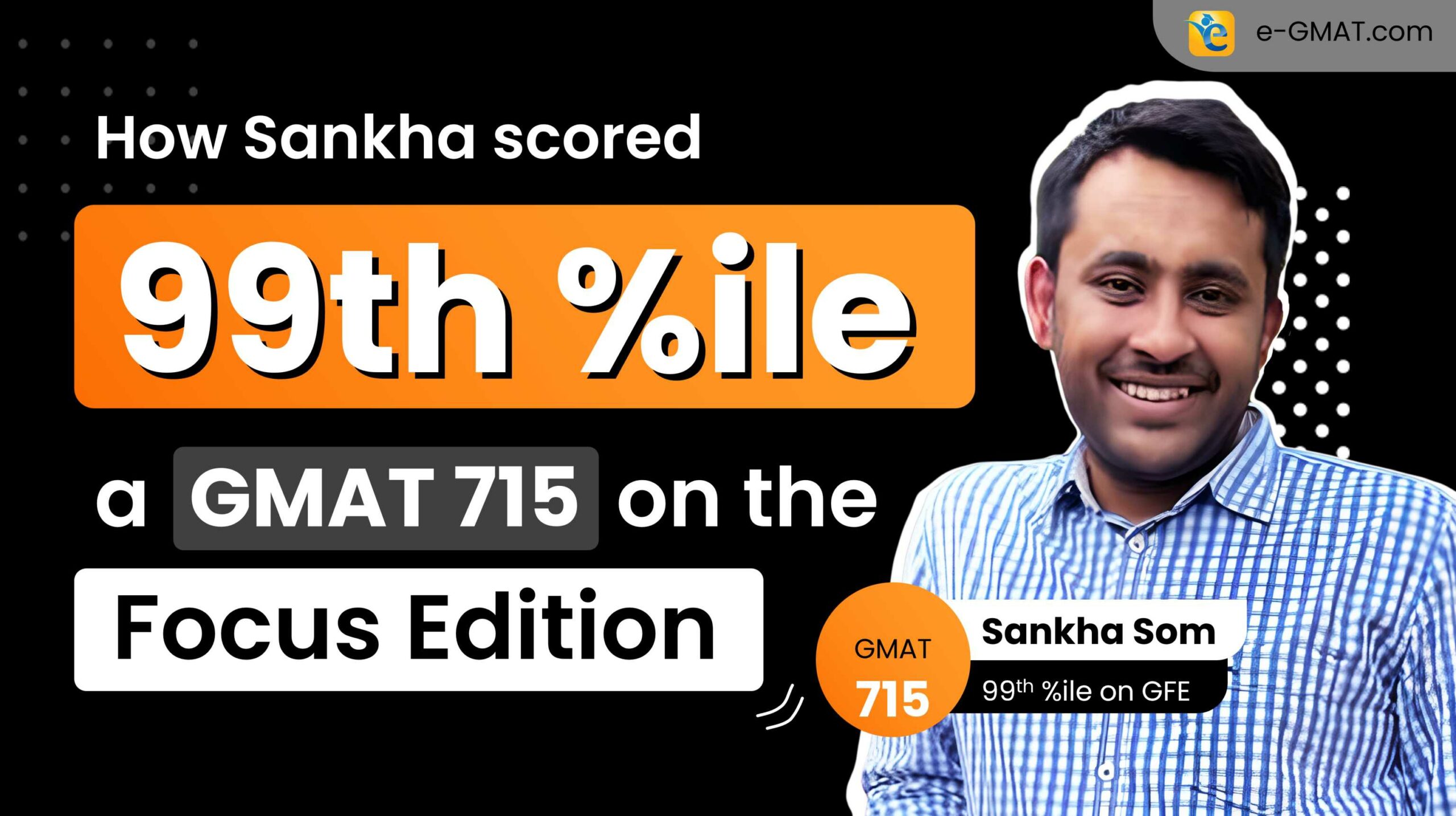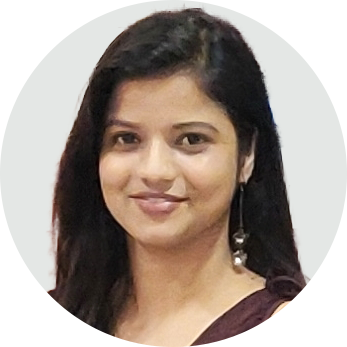Introduction: Diya’s Journey at a Glance
A 200-point score improvement on the GMAT seems impossible for most aspirants. Yet through strategic practice and mindset shifts, this transformation became a reality!
As a working professional with an engineering background, Diya initially approached the GMAT with confidence. Her first mock score of 495 delivered a stark reality check.
“I was completely disappointed in myself. But after two days of reflection, I decided to fully commit to this GMAT journey.”
The transformation that followed wasn’t just about learning concepts – it was about developing a strategic approach to test-taking itself. Time management proved crucial across all sections, particularly in Data Insights where mastering various question types within tight timeframes was essential.

Through methodical practice and targeted strategies, what seemed like an insurmountable challenge became achievable. Diya’s journey demonstrates how the right approach, combined with dedicated practice, can lead to remarkable results – even in a compressed timeframe.
Let’s explore how this transformation unfolded, starting with the strategic shifts that made it possible.
Section-by-Section Mastery: Breaking Down the Barriers
Diya’s 200-point improvement came from methodically addressing each section’s unique challenges. Her journey reveals key insights into mastering each GMAT section.
Data Insights: Leading with Strength
“DI is the most difficult section out of all the three sections because it requires both the skills at the same time,” During her course work, focusing on one type of question at a time made everything seem manageable. However, sectional mocks revealed the true challenge – handling mixed question types under time pressure.
Diya’s DI Challenge:
Her practice evolved to focus on:
- Multi-source questions requiring extra time allocation
- Data sufficiency questions aiming for 30-40 second completion when straightforward
- Graphical interpretations treated as quick-win opportunities
- Strategic time management allowing review of difficult questions
As we can see from her Scholaranium stats – Diya worked hard to strike the right balance between accuracy and speed. Her evolution in TPA accuracy (as shown in the image below), from 50% to 84%, while reducing her time from almost 3 minutes to 2 minutes, shows us how a strategic approach can lead to excellent results

Her actual GMAT experience validated this approach. When faced with three difficult opening questions, she moved forward instead of getting stuck, returning with seven minutes remaining to successfully solve two of them.
Quant: Engineering Background to GMAT Success
With her engineering background, Diya initially focused less time on basic modules, particularly topics like numbers properties and fundamental operations. However, she discovered that GMAT quant required a different approach than academic mathematics.
Diya’s Quant Transformation:
“Even though I can solve a question in algebra very quickly,” she reflects, “when actually solving in the practice tests, it wasn’t as easy.” Her breakthrough came from:
- Utilizing quick tips from the course modules to improve efficiency
- Learning to start questions the right way rather than jumping into calculations
- Focusing on solving methods that saved time over traditional approaches
- Practicing with actual GMAT-style questions rather than relying on theoretical knowledge
This approach paid off, as we can see consistent 65%+ accuracy, indicating her readiness to score in the 90%Ile+ range. There scores also reflect her internalization of the necessary processes and techniques needed to break the barrier to a Q88 score.
In the image below, we can see her hard accuracy progress in Algebra, where she was consistently scoring over 65%

Verbal: The Reading Transformation
The Verbal section saw perhaps the most significant strategic evolution. Diya’s approach to Reading Comprehension underwent a complete transformation.
“Initially when we read too much into the lines, it gets complicated in your own mind. You actually need to understand what is the gist of the passage and not go to the very detail of it.”
Diya’s Verbal Transformation:
Her RC strategy evolved from:
- Initial time: 6 minutes per passage
- Final time: 3-4 minutes per passage
- Focus: Understanding the storyline rather than every detail
- Approach: Using strategic pauses to process information
The results are evident from the snapshot below, where we can see that Diya’s initial time investment of 3.5 mins allowed her to answer the remaining questions in less than 1.25 mins each!

Through these focused approaches to each section, Diya transformed her performance. Her success came not just from understanding concepts, but from developing efficient, section-specific strategies.
Strategic Shifts: Building the Foundation
The path from 495 to 695 wasn’t just about more practice – it required fundamental changes in approach and mindset.
“I knew the concepts. The paper isn’t difficult. I needed to crack how to solve it.”
The breakthrough came in recognizing that different questions demanded different time investments. Rather than allocating equal minutes per question, she developed a strategic approach to time management that proved transformative.
STRATEGIC TIME ALLOCATION
- Quick Questions (30-40 seconds): Basic calculations, simple data insights
- Complex Questions (2.5-3 minutes): Multi-source data, challenging comprehension
- Result: Consistently finished with 3-4 minutes for review
This time management strategy carried through to each section’s unique challenges. In Data Insights, she chose to tackle it first while fresh, saving crucial minutes for reviewing challenging opening questions. Quantitative success came from completing sections in just 42 minutes, focusing on identifying the right starting point rather than getting lost in calculations.
The verbal section saw perhaps the most dramatic transformation in approach. Through focused practice, Diya reduced Reading Comprehension passage time from 6 to 3 minutes while maintaining accuracy. “It’s about understanding the storyline, not every detail,” she notes. “Once I learned to focus on the main idea, everything else fell into place.”
The final 13 days proved crucial, with full-length mock tests providing the practice ground for these strategies. “It wasn’t about learning new concepts anymore,” she reflects. “It was about mastering how to approach each question type efficiently.”
This strategic overhaul transformed her GMAT approach from scattered practice to focused execution, laying the groundwork for significant score improvement across all sections.
Test Day Success: From Strategy to Execution
After extensive preparation, Diya’s test day success hinged on a carefully crafted approach to section sequencing and focused execution. Her most crucial decision was restructuring her section order to maximize performance.

Her Data Insights section began with unexpected challenges. “The first three questions were incredibly tough,” she recalls. “But instead of panicking, I took a brief pause and moved forward.” This strategic decision proved crucial – she returned to these questions with seven minutes remaining and solved two correctly.
Diya’s Test Day Challenges:
In Quantitative, Diya’s engineering background combined with practiced efficiency led to completing the section in just 42 minutes. “I knew being careless wasn’t an option,” she notes. “Each question got exactly the time it deserved – no more, no less.”
The Verbal section, traditionally her biggest challenge, benefited from focused practice and strategic timing. Her refined approach to Reading Comprehension, developed through intensive mock tests, allowed her to maintain accuracy while significantly reducing time per passage.
Test day wasn’t just about subject knowledge – it was about executing a well-practiced strategy under pressure. By sticking to her planned approach and maintaining composure through challenges, Diya turned months of preparation into a balanced, impressive score.
Key Learnings: Insights from a 200-Point Journey
Reflecting on her GMAT journey from 495 to 695, Diya shares crucial insights for future test-takers.
“Start when you are ready,” she emphasizes. Her initial start in February, interrupted by recovery from a fracture and work commitments, taught her the importance of timing. “If you are actually confident about taking the GMAT, don’t waste your time. When you are ready mentally, you can do it in three to four months.”
One of her biggest realizations came from section preparation. Despite achieving a strong score, Diya notes that focusing equally on all sections is crucial. “Even if you’re good in one section, work on the other sections as well. Being under-confident in any section impacts your overall performance.”
The final sprint proved particularly revealing. “In the last one month, I actually focused on the study along with office work,” she shares. Her intensive approach with mocks in 13 days demonstrated that focused preparation, even in a short timeframe, can yield significant results.
Diya’s journey proves that GMAT success isn’t just about duration – it’s about dedication, strategy, and the right mindset. Her transformation from an uncertain starter to achieving a 695 shows that with proper focus and approach, significant score improvements are possible.
“Everyone’s journey is different,” she concludes. “The only thing is focus. If you are focusing throughout your preparation, it’s very easy to grab.”
Are you planning to pursue MBA at top business schools? Let us help you conquer the first step of the process i.e., taking the GMAT. Take a free mock test to understand your baseline score and start your GMAT prep with our free trial. We are the most reviewed online GMAT Prep company with 2000+ five star reviews on GMATClub.















